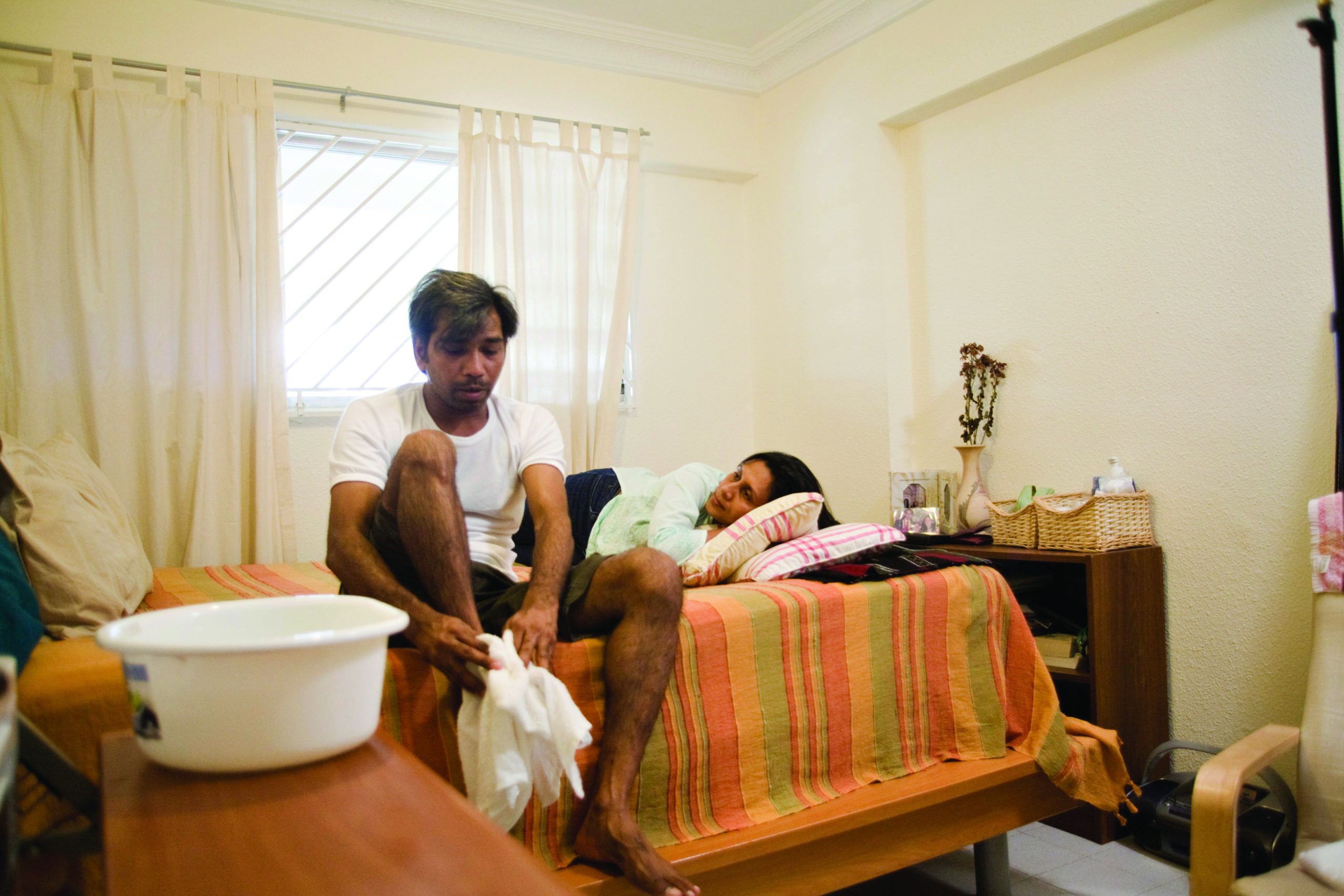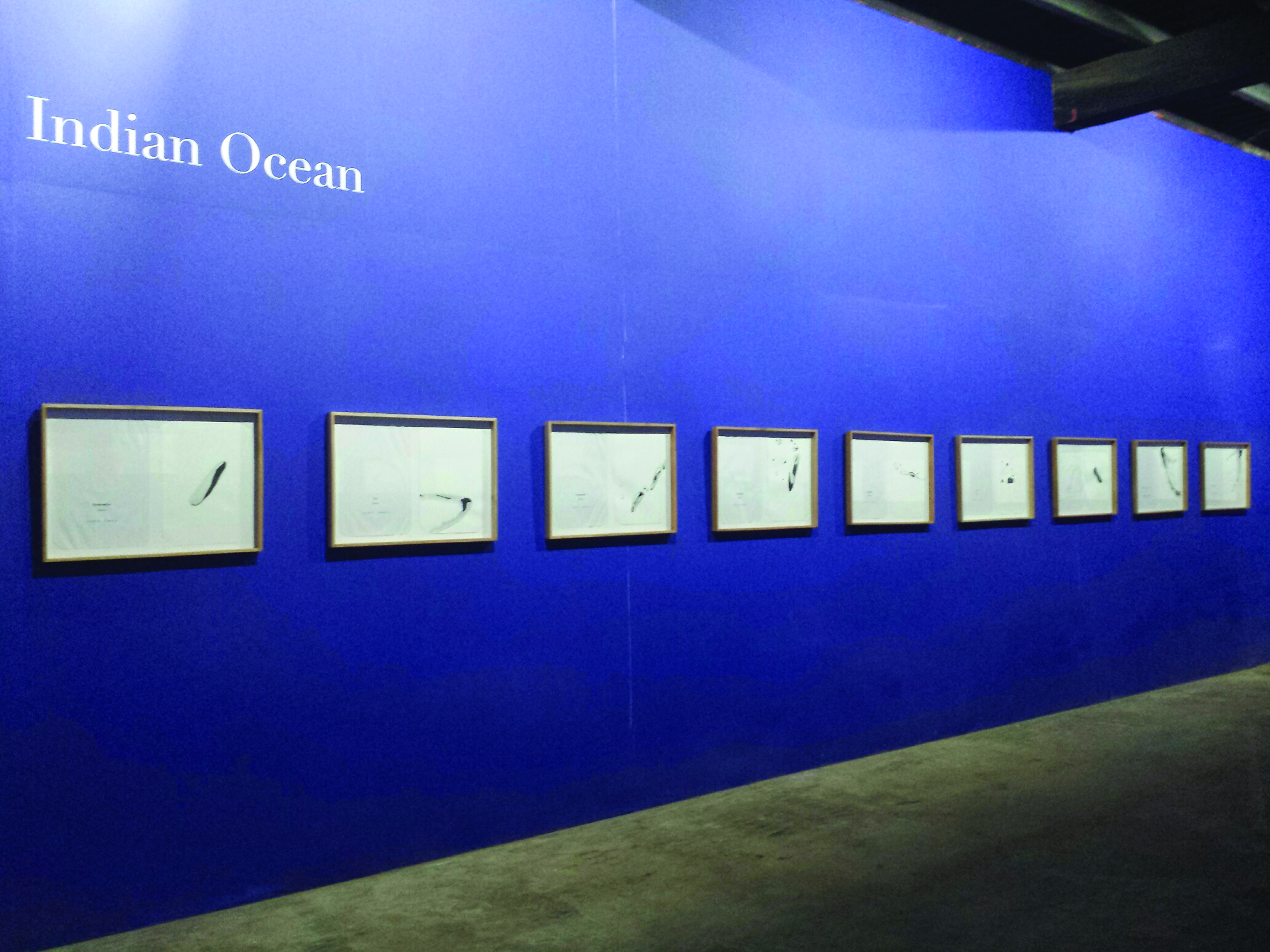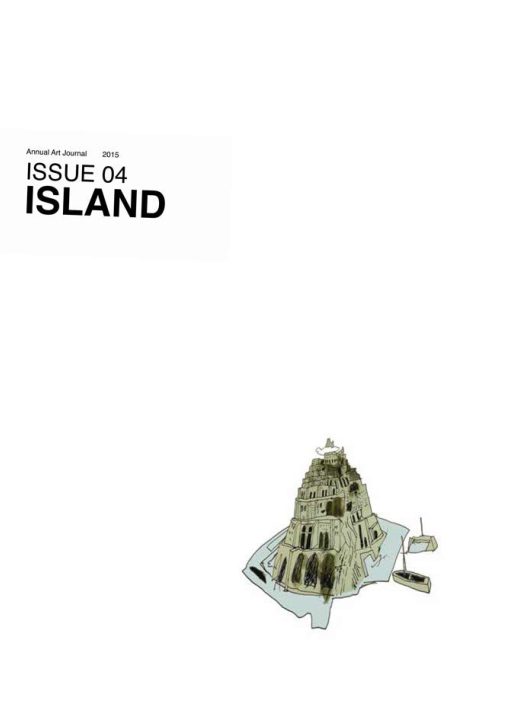The shores are guarded
When vessels overloaded with Rohingya refugees from Burma and Bangladesh reached the shores of Malaysia, Indonesia and Thailand in May 2015, the boats were pushed away. The boat people who fled persecution and poverty at home remained stranded at sea. The boat people are stateless. At home they are denied citizenship; on foreign territories they are refused shelter. Paying huge amounts of money to board the ships to flee conflict situations, the refugees are forcibly converted into commodities by human traffickers serving the plantation, the electronics and fishing industries of the region. They are transported by sea like 90 per cent of the world’s goods. Containerization, a post-war innovation that changed the shipping industry, conceals the content, hides and makes it invisible, turning the transported goods into an abstract entity. When boats carry human cargo, do people share the same state of invisibility as containers on ships?
and the water surrounding
Water is an intrinsic feature of an island. We simply define an island as a body of land surrounded by water. Water divides and connects. It separates islands into individualised territories, yet it also sets them into connections and brings them together into a wider network of cultural and historical relations.
In conventional representations of ‘islands’, in the tourist-like postcards or classical Hollywood adventure films, the image of sea waves touching the golden sand is a popular trope. The relationship to the sea is a fundamental part of life on an island. Such an assumption serves as a premise for Singaporean-based artist Sherman Ong’s film, Flooding in the Time of Drought (Singapore, 2009). Its starting point is an alarming water crisis affecting the city-island of Singapore. The stories of the film capture different characters reacting to the water scarcity either by rationing its use or making water provisions. What starts as a liminal situation for the inhabitants of the island develops into a network of micro-narratives of different migrant workers who came to Singapore for a better living or change. The water crisis recedes in the background while the daily problems of the characters surface.

Sherman Ong, Flooding in the Time of Drought, Singapore, 2009,
Film Still. Image courtesy of the artist.
Water becomes a metaphor that embraces all individual stories under one umbrella. What can the metaphor of ‘water crisis’ signify in the context of Singapore? A major harbour in colonial and post-colonial times, Singapore’s exceptional economical growth has vastly relied on sea trade and port activities. Yet the strong presence of ‘water’ in economical affairs does not find the same resonance in the everyday. Paradoxically for an island, the presence of the bordering water seems far removed. Similarly in Ong’s film, it takes distance and remains in the background.
The metaphor of the ‘water crisis’ also stands for an experience of loss. The stories in Flooding in the Time of Drought are all filled with a certain sense of loss and longing: the overwhelming feeling of being displaced from home, the pressure to make a living, the longing for connection and affection. The lack of water points to the scarcity of other resources and necessities that make our lives not so much complete, but liveable. It also serves as a reminder of one’s limits. And for those who inhabit islands, limits are an everyday reality, an awareness of where the land stops and where the sea begins.
those fragile islands (drawings)
At the 2nd edition of Kochi-Muziris Biennale, Swiss artist Marie Velardi produced an ambitious survey of sinking islands. Her investigation resulted in Atlas des îles perdus (Atlas of Lost Islands), with a launch date slated for 2107, the time when all the listed islands will presumably have disappeared under the sea. Alongside this publication, Velardi presented several of the ink drawings included in the anthology.

Maria Velardi, Atlas des îles perdus (Atlas of Lost Islands), 2007
Installation view, Kochi-Muziris Bienniale, 2014
The islands are depicted with a sheer simplicity of means and economy of details. Each territory is delicately outlined in ink suggesting the threatening impact of the water. These fragile islands, prone to submerge to rising seas, find in the watercolour medium their most suitable agent. Isn’t water a threat to both watercolours and physical islands? The absence of details brings the work to a level of abstraction. The only elements that individualise the body of land is its name and an indication of its geographical coordinates written on a sheet of tracing paper that covers each drawing. It suggests the exact way such lost territories will be remembered once wiped off the global map: as abstract entities reduced to a name or a cartographic note.
In one of the reviews of the Biennale, a journalist, discussing the challenges of the climate in the preservation of works in the exhibition, noticed that Velardi’s watercolours “were rippled with damage”1 weeks after the opening. Such an accident gains meaning in the context of this work that became so intimately connected to the physical reality of its space of display. The slow deterioration of the ‘island (drawings)’ predicted what Velardi herself anticipated. At same time, the drawings embodied what the artist had aimed to represent: a state of irreversible vulnerability.
in the imagination
Some time ago, I came across a story that circulated in the Singapore media. The story has a touch of tenderness. A group of former inhabitants of Pulau Sudong, one of Singapore’s Southern Islands, signed a petition asking authorities for permission to return to this island for one day, or at least a few hours. The petitioners had been rehoused in the ’70s on the mainland when Pulau Sudong was turned into a military zone for a live-firing exercise; no access to civilians was permitted since. The former residents grew up by the sea as fisherfolk families living in kampong2 houses. More than three decades passed since their displacement, yet they long to return to what they perceive as a lost paradise. Over time, the home-island has become a space for projections of desires produced by distant memories and the work of imagination. Perhaps it is not an accident that such a missed home is an island, as it traditionally lends itself to fantasy and projections. Isn’t an island always susceptible to be idealised?
In Western literary tradition, islands have always been a metaphorical setting for the imagination to unwind, but also for political projects and ideologies to solidify. There is no surprise that Thomas More’s Utopia is set on an island, or that Daniel Defoe’s novel Robinson Crusoe encapsulates the colonial discourse, although ironically such a story has been depoliticised and sits comfortably under children’s literature. Stories of paradise, stories of calamities, all island narratives linger at the extremes. An island is a meeting point between the utopian and dystopian.
The Pulau Sudong islanders’ desire to return is inherently nostalgic; it brings home and longing together. For them, an island is something they lost, for others something they never had. Longing is a topos for an island, what we long for is either irreversibly lost in time or has never existed.
of the artist
In 1999, the Italian artist Maurizio Cattelan produced one of his funniest art jokes: the 6th Caribbean Biennale: Blown Away. A project in collaboration with curator Jens Hoffmann, the Biennale was a work of fiction. It replicated the infrastructure of a conventional Biennale: a board of directors was established, a Biennale’s president was appointed, invitations and postcards were distributed and large-scale advertisements promoted the event in art magazines. The language mimicked the art jargon, in claims such as building relationships with local communities, standard statements circulated in press releases of large-scale exhibitions across the world. A predictable roster of Biennale artists was invited to take part in this international event: Olafur Eliasson, Douglas Gordon, Mariko Mori and Rirkrit Tiravanija, among others. They were asked to make no work, but rather to enjoy a fully funded week of holiday in St. Kitts in the West Indies.
One journalist describes the atmosphere of the event: “breakfast swims off a black sand beach; afternoon naps to the jingle of a tropical downpour; and an Italian Vogue shoot that, like almost every other event, took place at the idyllic Golden Lemon Inn where we were all staying.”3 The choice to use a former colonised island as a setting is another playful device. It reminds us of the art tourism that such Biennale events stir up – a potential force that was grasped and instrumentalised by many governmental authorities. More significantly, it also highlights that such international art events might reinforce a Western system of values and practices that they claim to critique.
By revealing the methodologies and structures of the institution of Biennale, this project can be described as institutional critique. The critique from within by the major art players is already an assimilated strategy by the system it attempts to challenge. However what remains up for debate is whether the critique generated from this project bears any weight, and whether it has the strength to change the status quo. Yet looking back at it years later, such a project only survives as a good old joke that once gained a laugh within the small circuit of the international art islanders.


